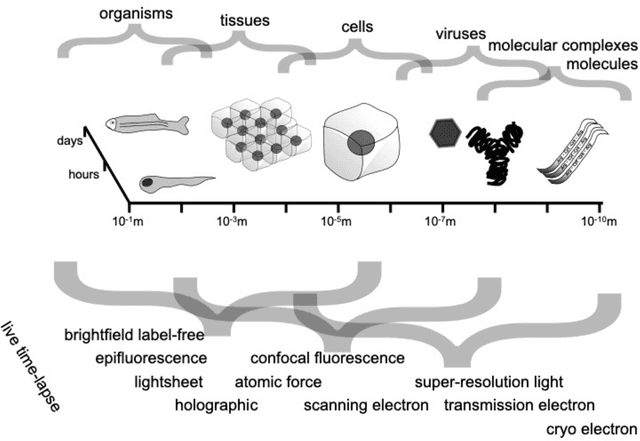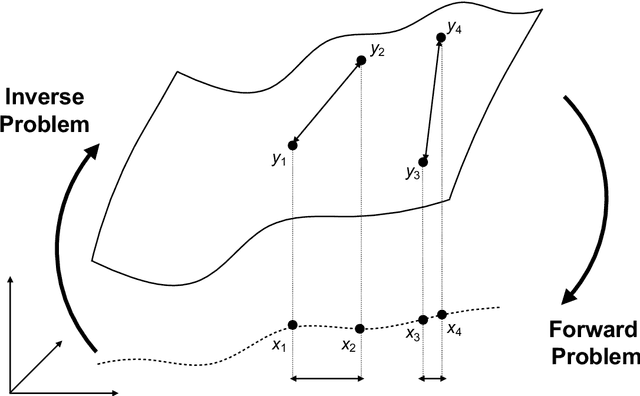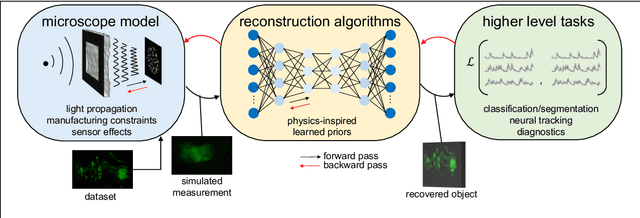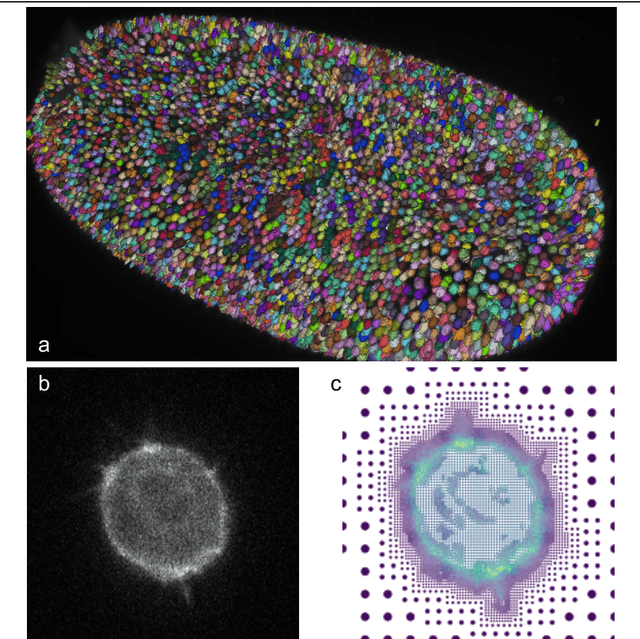Damian Matuszewski
Roadmap on Deep Learning for Microscopy
Mar 07, 2023



Abstract:Through digital imaging, microscopy has evolved from primarily being a means for visual observation of life at the micro- and nano-scale, to a quantitative tool with ever-increasing resolution and throughput. Artificial intelligence, deep neural networks, and machine learning are all niche terms describing computational methods that have gained a pivotal role in microscopy-based research over the past decade. This Roadmap is written collectively by prominent researchers and encompasses selected aspects of how machine learning is applied to microscopy image data, with the aim of gaining scientific knowledge by improved image quality, automated detection, segmentation, classification and tracking of objects, and efficient merging of information from multiple imaging modalities. We aim to give the reader an overview of the key developments and an understanding of possibilities and limitations of machine learning for microscopy. It will be of interest to a wide cross-disciplinary audience in the physical sciences and life sciences.
Interpreting deep learning output for out-of-distribution detection
Nov 07, 2022Abstract:Commonly used AI networks are very self-confident in their predictions, even when the evidence for a certain decision is dubious. The investigation of a deep learning model output is pivotal for understanding its decision processes and assessing its capabilities and limitations. By analyzing the distributions of raw network output vectors, it can be observed that each class has its own decision boundary and, thus, the same raw output value has different support for different classes. Inspired by this fact, we have developed a new method for out-of-distribution detection. The method offers an explanatory step beyond simple thresholding of the softmax output towards understanding and interpretation of the model learning process and its output. Instead of assigning the class label of the highest logit to each new sample presented to the network, it takes the distributions over all classes into consideration. A probability score interpreter (PSI) is created based on the joint logit values in relation to their respective correct vs wrong class distributions. The PSI suggests whether the sample is likely to belong to a specific class, whether the network is unsure, or whether the sample is likely an outlier or unknown type for the network. The simple PSI has the benefit of being applicable on already trained networks. The distributions for correct vs wrong class for each output node are established by simply running the training examples through the trained network. We demonstrate our OOD detection method on a challenging transmission electron microscopy virus image dataset. We simulate a real-world application in which images of virus types unknown to a trained virus classifier, yet acquired with the same procedures and instruments, constitute the OOD samples.
 Add to Chrome
Add to Chrome Add to Firefox
Add to Firefox Add to Edge
Add to Edge